MeteoFon: accurate weather information

Probably each of us was dissatisfied with the weather forecast. Not because the forecast bodes trouble like unbearable heat, wind chills or prolonged downpours. But because the promises of meteorologists do not coincide with reality. And this happens very often. Well, if the weather is better than predicted. And if vice versa? For most people in their daily lives, this is usually nothing more than an annoying nuisance. But for some, the wrong weather forecast can cause big losses, or worse. For example, accurate weather forecasting is very important in the field of aviation, transport, during sowing and harvesting, in the formation of energy consumption plans, ensuring uninterrupted transmission of electricity, and in many other areas of production and business.
An accurate weather forecast is impossible without no less accurate information about the current state of the atmosphere. The denser the weather stations are, the more often you can get information from them, the more accurate the forecast can be built.
Unfortunately, Russia still cannot boast of a high level of accuracy of weather forecasts. For a number of reasons, we are far behind other countries in terms of the number of weather stations and their technological level. For comparison, about 15,000 weather stations are installed in China, about 11,000 in the USA, and 4,500 in Russia. At the same time, many Russian weather stations still do not have the ability to remotely monitor and control, and the observations are still manually removed from them twice per day.
At the same time, Russia already has a ready-made communication infrastructure on the basis of which it is possible to create a very dense network of high-precision modern weather stations. On the basis of its own mobile network MegaFon, in support of federal projects, Roshydromet began to develop a weather monitoring system, which was called MeteoFon. The essence of the project is as follows: automatic weatherproof weather stations are installed on the operator’s mobile masts, which monitor the environment with high accuracy around the clock using various parameters - air temperature, humidity, wind speed and direction, pressure, precipitation. Ideally, such a solution can save a lot of money on creating a network infrastructure and build an extremely dense network of weather stations,
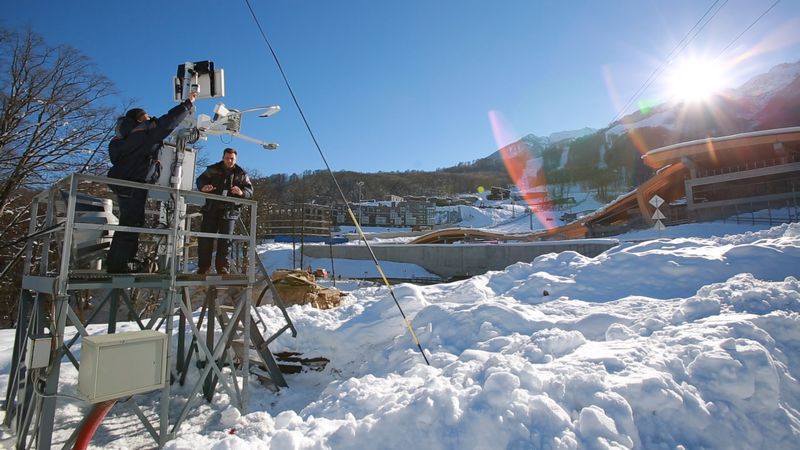
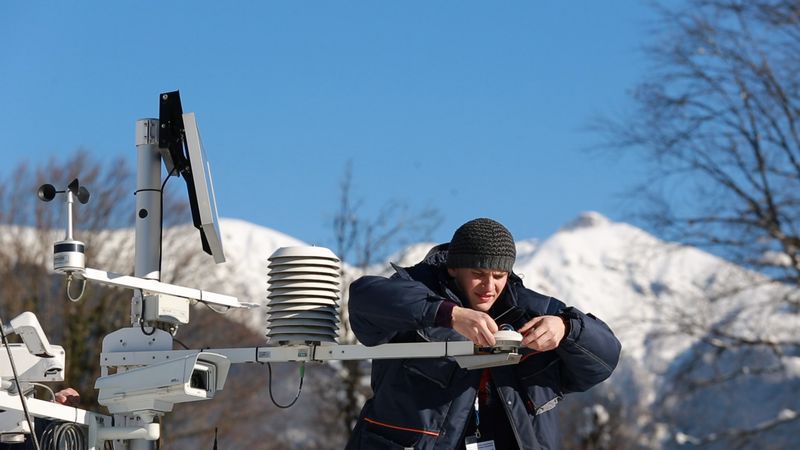
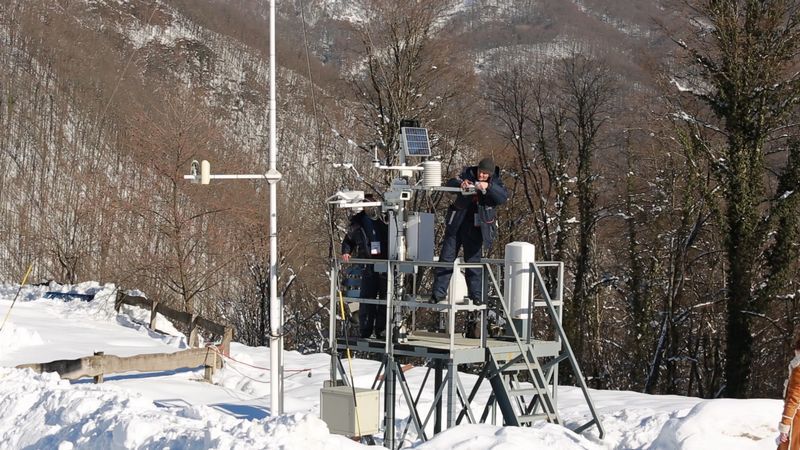
All on the mast!
Meteorological stations used in the framework of the MeteoFon project are licensed by Roshydromet and comprise the departmental meteorological network, which was successfully implemented by MegaFon together with Gismeteo. They are mounted on the supporting structures of cellular communication stations - on their masts. The following instruments and sensors are standard equipment for such weather stations:
• Thermometer.
• Barometer.
• Hygrometer with dew point measurement.
• Two anemometers located at different heights, on average, at a distance of 2 m. They are designed to measure wind speed and its gradient.
• Instrument for measuring wind direction.
• Precipitation meter, recording the intensity of precipitation.
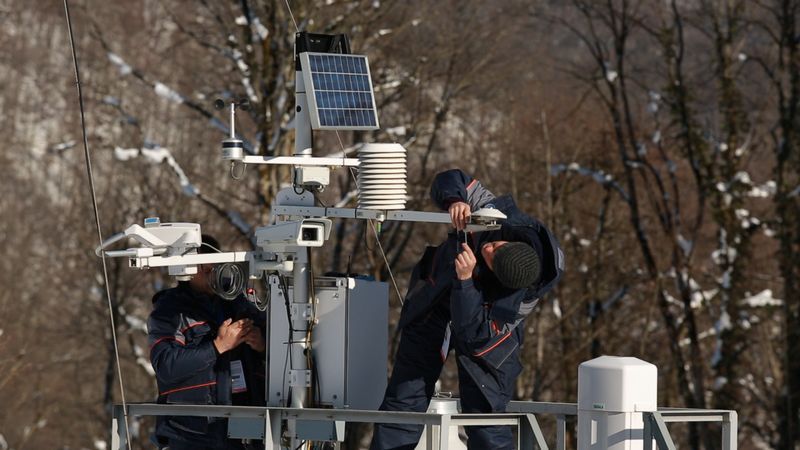
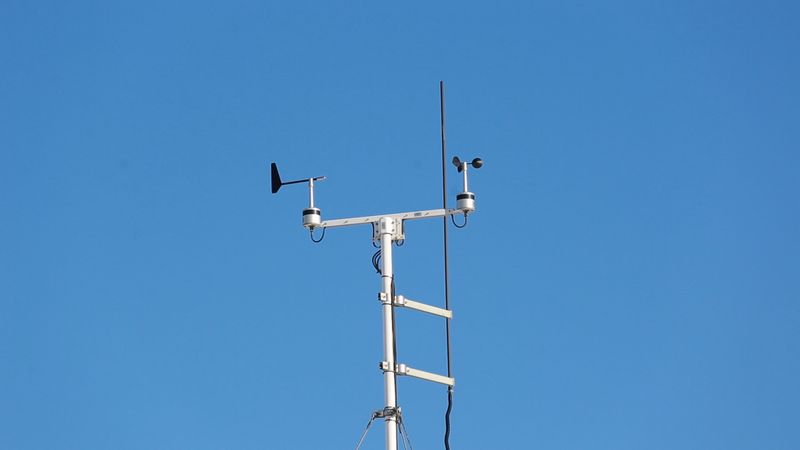
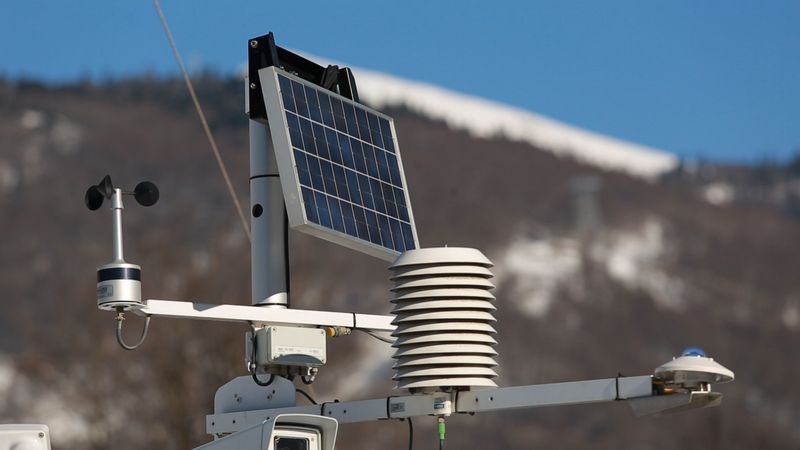
The frequency of information collection by each of the sensors is set within a very wide range. In addition, such a station can be equipped with a dosimeter, video camera, gas analyzer for measuring the level of carbon dioxide (CO2), an ultrasonic sensor for measuring the depth of the surrounding snow cover.
To support the Roshydromet project on meteorological control of the Sochi 2014 Olympic Games venue, MegaFon implemented the connection of 8 meteorological complexes installed by construction investors at various sports facilities of the Mountain Olympic Cluster. MegaFon has also deployed a data transmission network for the MeteoFon project, consisting of 21 professional automatic weather stations WXT510 from VAYSALA, which are deployed by the company on its own cellular communications masts. All meteorological data on-line is transmitted via the MegaFon fixed and mobile network to forecasters of the Roshydromet Monitoring Center, which ensures high efficiency of preparing weather forecasts to inform both the organizers of the competitions and athletes, as well as the services of the Ministry of Emergencies and the Ministry of Internal Affairs responsible for the safety of the Olympic Games.
Weather stations are remotely controlled through the mobile communications infrastructure of MegaFon. The collected information can be used:
• to assess the current weather conditions in a specific area;
• for the formation of short-term (minutes, hours) and long-term (days, weeks) weather forecasts.
Project development
Today, MegaFon is the only mobile operator in Russia that has a license from Roshydromet, and the data collected by MeteoFon stations are used to formulate official weather forecasts. The first weather stations were installed on the territory of Greater Sochi and its mountainous part - Krasnaya Polyana, where all the ski resorts of the resort are located in 2011. Their work was successfully tested at pre-Olympic test competitions. Today, thanks to the collected weather information in the city and its environs, the organizers of sports competitions at the Olympics have repeatedly made the necessary adjustments to the daily sports schedule. The complex mountain landscape of the Black Sea coast is characterized by a wide variety of weather conditions at a particular point in time.
In addition to Sochi, the work of 8 weather stations in Kazan and more than 120 along the Amur highway is currently being tested. MegaFon’s future plans include the creation of an all-Russian network of weather stations, which will provide high precision and frequency data on the current weather conditions to everyone. In particular, at the second stage of network deployment, it is planned to install about 300 weather stations for every 100 km of federal highways. Moreover, the total length of roads that will be covered by the MeteoFon network is 28 685 km.
Another function of the MeteoFon is the detection of various natural disasters, such as forest fires. In fact, the network of weather stations will allow not only passively collecting weather information, but also creating a weather forecast and emergency notification service in the future, depending on whether the subscriber’s device is currently connected to a specific base station.
